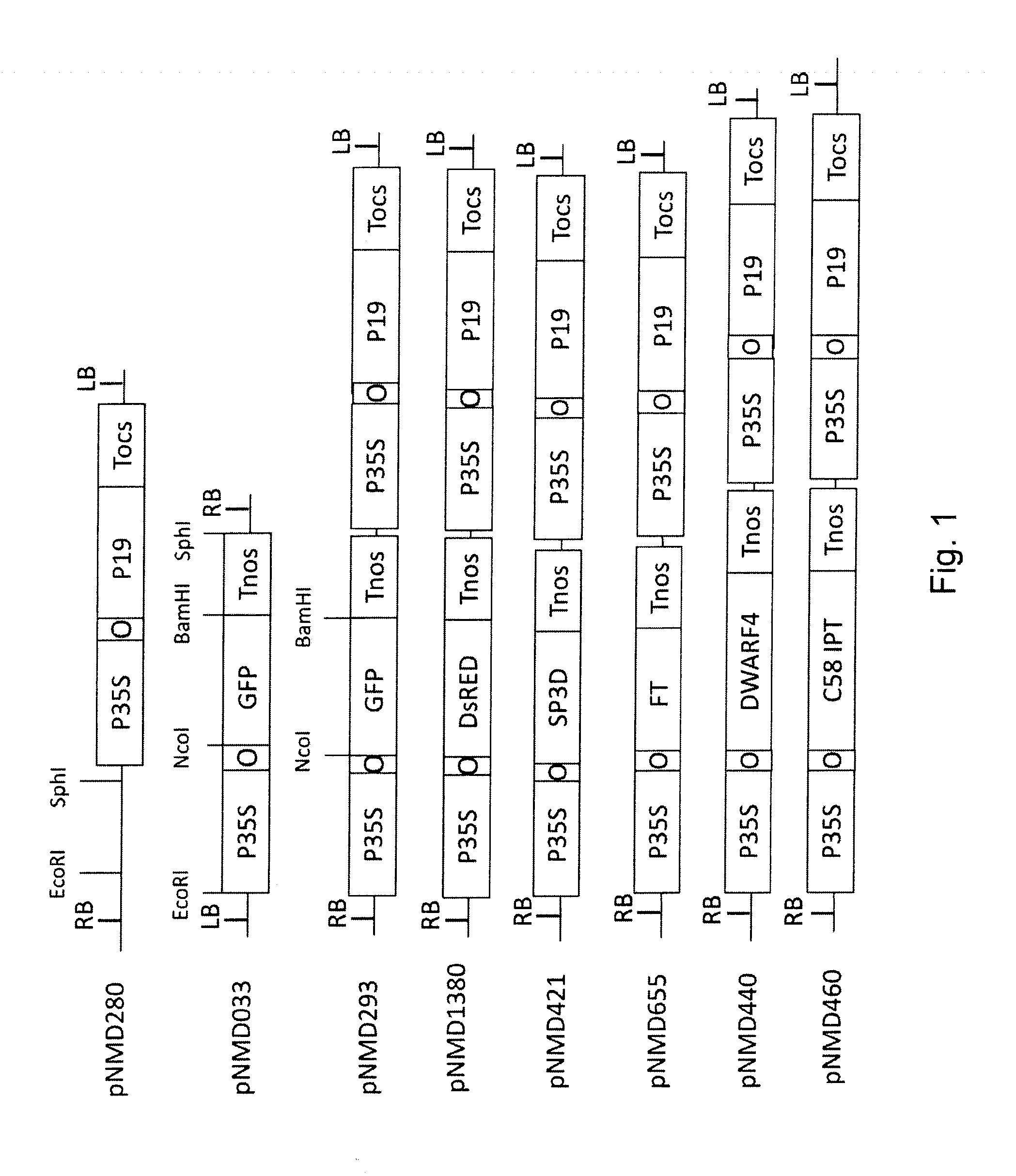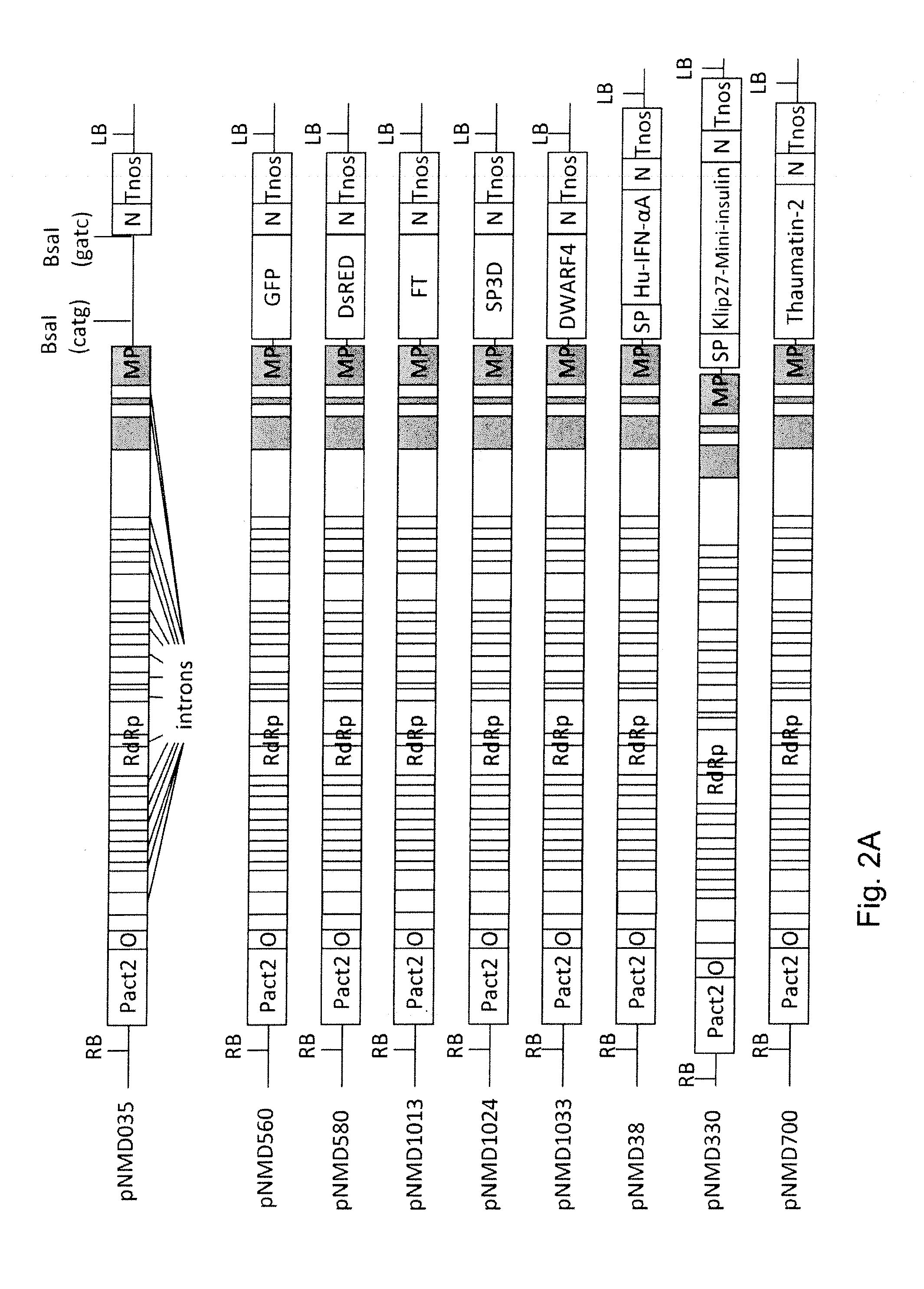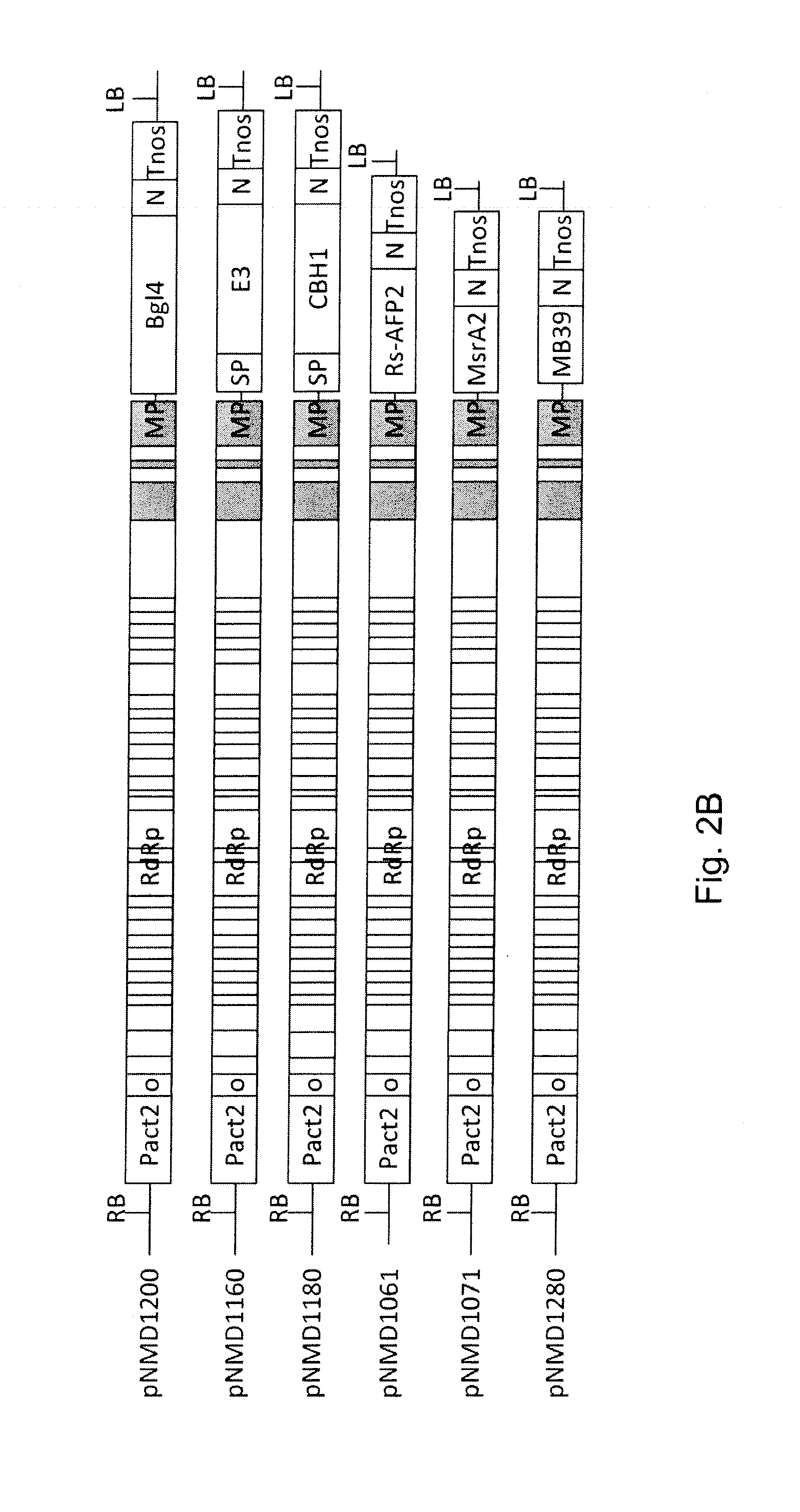Process for transfecting plants
a plant and transfection technology, applied in biochemistry apparatus and processes, microorganisms, fermentation, etc., can solve the problems of high cost, long time, and many limitations of the development of transgenic crops, and achieve the effect of increasing the probability of plant transfection, high efficiency, and increasing the efficiency of transfection
- Summary
- Abstract
- Description
- Claims
- Application Information
AI Technical Summary
Benefits of technology
Problems solved by technology
Method used
Image
Examples
reference example 1
Determination of Agrobacterium Cell Concentration in Liquid Culture in Terms of Colony Forming Units (cfu)
[0130]The concentration of Agrobacterium cells in liquid suspension in terms of colony forming units per ml (cfu / ml) of liquid suspensions can be determined using the following protocol. Cells of Agrobacterium tumefaciens strain ICF 320 transformed with construct pNMD620 were grown in 7.5 ml of liquid LBS medium containing 25 mg / L kanamycin (AppliChem, A1493) and 50 mg / L rifampicin (Carl Roth, 4163.2). The bacterial culture was incubated at 28° C. with continuous shaking. Absorbance or optical density of bacterial culture expressed in absorbance units (AU) was monitored in 1-ml aliquots of the culture using a spectrophotometer at 600 nm wavelength (OD600). The cell concentration estimated as a number of colony-forming units per milliliter of liquid culture (cfu / ml) can be analyzed at OD600 values 1; 1.3; 1.5; 1.7 and 1.8. For this purpose 250-μl aliquots of liquid culture were d...
example 1
Vectors Used in the Following Examples
[0134]In this study we used standard transcriptional vectors based on 35S CaMV promoter as well as TMV- and PVX-based viral replicons with or without cell-to-cell movement ability.
[0135]All transcriptional vectors were created on the basis of pICBV10, a pBIN19-derived binary vector (Marillonnet et al., 2004, 2006). They contained two expression cassettes inserted within right and left borders of same T-DNA region (FIG. 1). For cloning of pNMD293 expression vector, two intermediate constructs (pNMD280 and pNMD033) were created. pNMD280 contained the expression cassette comprising, in sequential order, the Cauliflower mosaic virus (CAMV) 35S promoter, omega translational enhancer from Tobacco Mosaic Virus, coding sequence of P19 suppressor of silencing from Tomato Bushy Stunt Virus (TBSV) (GenBank accession no. CAB56483.1) and terminator from octopine synthase gene of Agrobacterium tumefaciens inserted between T-DNA right and left borders. To enab...
example 2
Diluted Agrobacteria can be Delivered to Nicotiana benthamina Using Surfactant by Spraying
[0140]We have shown that Nicotiana benthamiana plants can be transfected by spraying of plants with diluted agrobacterial cultures containing surfactant (FIG. 6). To evaluate the parameters influencing the transfection and optimize the transfection efficiency, we used dipping of Nicotiana benthamiana leaves in agrobacterial suspension. This approach allows exact measurements and easy testing of multiple experiment versions. Overnight agrobacterial cultures (OD600=1.5) were diluted 1:100 and 1:1000 (dilution factors 10−2 and 10−2, respectively) in 10 mM MES buffer (pH 5.5) containing 10 mM magnesium sulfate and supplemented with surfactant Silwet L-77. Three types of constructs providing GFP expression were tested: 1) transcriptional vectors, 2) TMV-based viral replicons and 3) PVX-based viral replicons (FIG. 6). Viral vectors used in these experiments were disabled for both systemic and cell-to...
PUM
| Property | Measurement | Unit |
|---|---|---|
| particle size | aaaaa | aaaaa |
| particle size | aaaaa | aaaaa |
| size | aaaaa | aaaaa |
Abstract
Description
Claims
Application Information
 Login to View More
Login to View More - R&D
- Intellectual Property
- Life Sciences
- Materials
- Tech Scout
- Unparalleled Data Quality
- Higher Quality Content
- 60% Fewer Hallucinations
Browse by: Latest US Patents, China's latest patents, Technical Efficacy Thesaurus, Application Domain, Technology Topic, Popular Technical Reports.
© 2025 PatSnap. All rights reserved.Legal|Privacy policy|Modern Slavery Act Transparency Statement|Sitemap|About US| Contact US: help@patsnap.com



